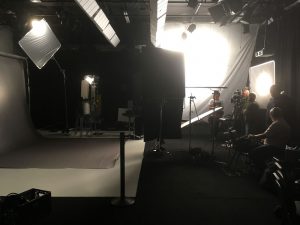In 1944, newcomer Lauren Bacall uttered one of the most iconic lines in cinematic history in her very first film. The movie: To Have and Have Not; the line: “You know how to whistle, don’t you, Steve? You just put your lips together and blow.”
As anyone who has trouble whistling will tell you, this is technically correct, but while such an explanation is simple enough, there is more to whistling than just lip placement and moving air. If that’s all it took, there would be a lot more brass and woodwind players in the world.
Take another well-worn phrase: “just point the camera and shoot.” Again, while technically correct this is even more of an egregious oversimplification than Bacall’s line from the movie.
The famed photographer Elliott Erwitt once said that “the whole point of taking pictures is so that you don’t have to explain things with words.” And yet, if you want a picture to do all the talking then the photography will require at least as much thought and effort as constructing a persuasive oral thesis.
Utah’s Answer to ‘Point and Shoot’
We bring up these two unhelpful tutorials to raise the point that even the simplest tasks, done well, require more than a simple effort.
Whistling takes diaphragm work, an unobstructed resonance chamber, and a purposefully placed tongue. Even then, you can’t make music without an ear for it.
Likewise, photography means knowing your tools and how to use them properly. But a series of pictures does not cinema make.

For every dreamer who longs to do more than point and shoot, our team at Ignite Studios is the perfect collaborator. Not only do we have the equipment and the experience, but we know how to interpret your vision into a unique, digital representation; the fruits of knowing that good cinema needs more than a cursory knowledge of camera and subject, but light and sound as well.
You can get in touch with our Salt Lake City-based recording studio to start collaborating on your next project. In the meantime, you can familiarize yourself with some of the techniques we utilize to take you away from ‘point and shoot’ and closer to a fully cinematic result.
Preparation
The key to a successful shoot is preparation.
While there are plenty of stories about “happy accidents” that occur when everyone is on set that makes a movie memorable, those ad-libbed or unplanned moments often can’t come around (let alone be captured in a satisfactory way) without all the legwork being done ahead of time to create a space for play.
Below are a few things to think about when preparing for a day of shooting.
- Storyboarding: Perhaps the most basic, yet effective, way we have been planning our films since the invention of the camera. Storyboards not only give you a chance to see a rough outline of the film you’re making, but the actual act of drawing them engages your creative brain and you start to prove your own decisions in the pre-production stage before ever stepping foot on set. If the storyboards don’t cement your conviction for the shot as outlined, it probably doesn’t belong in the movie.
- Chasing the Light: Knowing where you’re shooting and how to work with the light is essential. Will you be doing all of your filming using natural lighting? Then you might be waiting until Golden Hour, which is the first hour after sunrise and the last hour before sunset. Do you want to use a gaffer to control the lighting so that you have more control over the environment? Then you may need to rent a studio to make sure your cues properly light your subject. Light is the single most important element of taking a great shot.
Working in Camera

Once you and your actors and crew are on set, and all the light and sound has been rigged, you’re ready to go. While there are myriad techniques to employ that make things cinematic, some tips are too important to ignore.
- Learn the Lingo: The quickest way to make something cinematic is knowing how to communicate with your cameraman and cinematographer. Thanks to your storyboards, you know that in this shot you want a Dutch angle (when the frame is tilted to the side, creating a feeling of being off-kilter), leading into a pan of the environment (a horizontal movement from a stationary camera), which then cuts to a dolly shot of the lead actor (when the entire camera moves forwards or backward). Knowing what these movements are and how to talk about them is key for your project.
- Choose the Right Lens: There are literally hundreds of different types of lenses to choose from, each offering different sizes and resolutions to the frame. Our professional camera operators will help you choose the best lens for your project. Typically, a close-up is done in an 85mm lens, while a wide shot is done in a 21mm lens.
Post-Production
It might seem reductive to say the true magic of cinema happens in post-production, but that’s the case.
From color grading to audio production, our Salt Lake City studio can take any project you have across the finish line for the most cinematic result you could have hoped for.
If you’d like to take a tour of the kind of setup we’re using at our video studio, you can drop on by for a consultation and we can get going on creating the storyboard for your next project.
|
Production Studio Rental Services
|
Digital Media Production Services
|
|---|---|
|
Audio Production Studio
|
Film Production Studio
|
|
Music Recording Studio
|
|
|
Video Production Studio
|
Editing Bay
|
